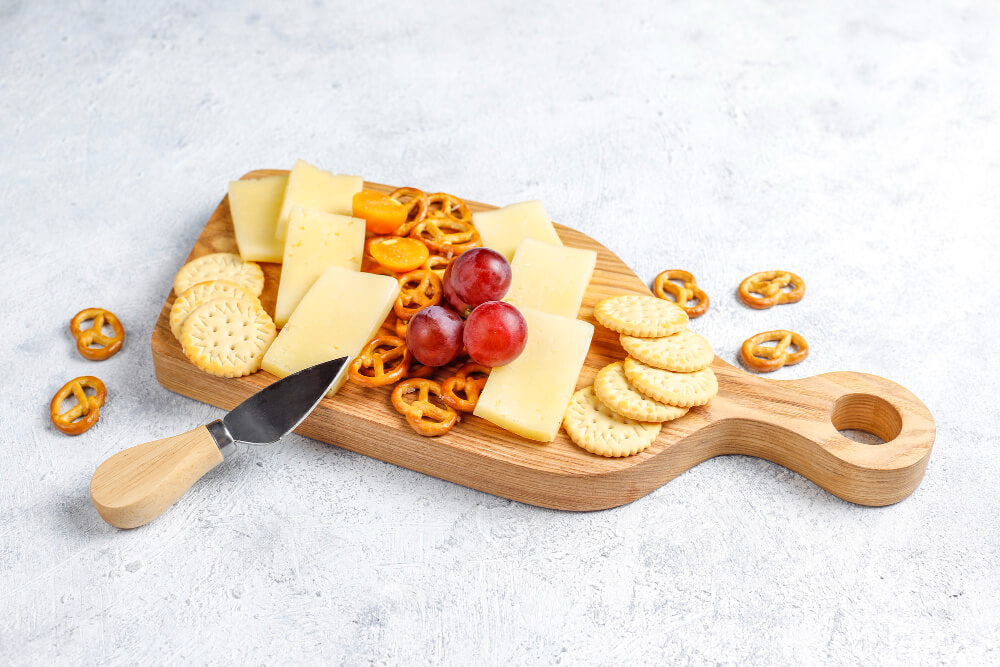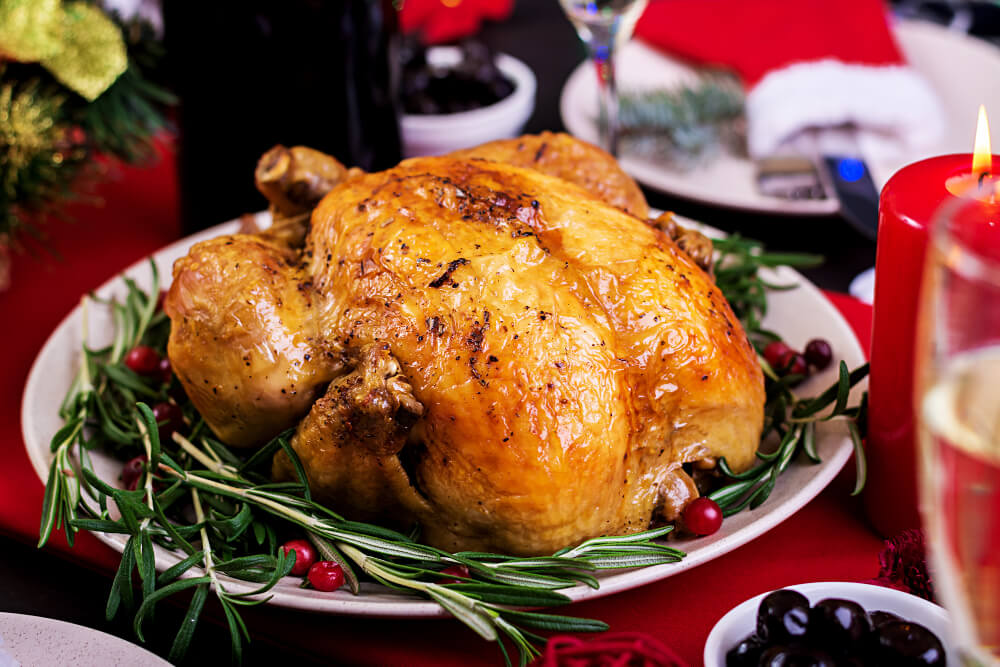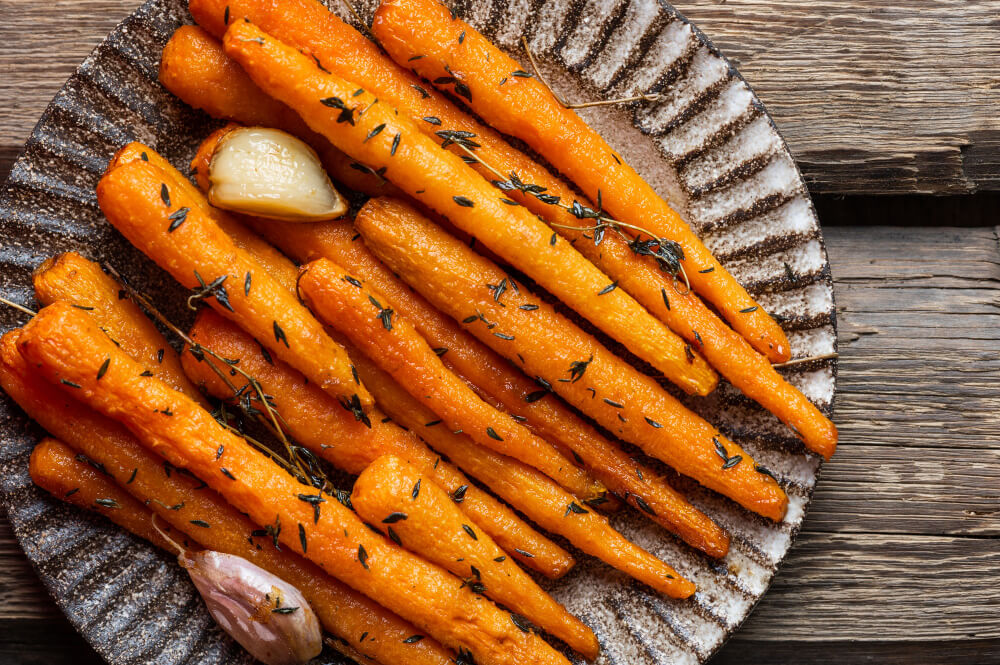
Charcuterie boards have become a staple for gatherings, parties, and even just a delicious snack. They are versatile, beautiful, and can be tailored to fit any taste or dietary preference. While the presentation of the board is important, knowing how to fold the meat is essential for creating that perfect, visually appealing charcuterie board.
In this blog post, we'll discuss the best meats to use, various folding techniques, and complementary cheeses and crackers. We'll also share some tips on styling your board to create a stunning centerpiece for your next gathering.
What are the Best Meats for a Charcuterie Board?

When it comes to choosing the right meats for your charcuterie board, there are a few things to consider, like flavor, texture, and variety. Here are some popular choices that you can't go wrong with:
- Prosciutto: This thinly sliced, cured Italian ham has a delicate and slightly sweet taste that pairs well with many cheeses and crackers. It's a must-have on any charcuterie board.
- Salami: A variety of salami types like soppressata, Genoa, and pepperoni add a savory and sometimes spicy flavor to the board. Their firmer texture is perfect for folding and rolling techniques.
- Capicola: Also known as coppa, capicola is an Italian dry-cured pork shoulder with a tender texture and a spicy kick.
- Mortadella: This Italian cured sausage is similar to bologna but contains pistachios and has a smoother, more delicate flavor.
- Pâté: For a more unique and rich addition to your charcuterie board, consider including pâté made from liver, like chicken or duck.
Remember, variety is key, so try to include a mix of textures and flavors on your charcuterie board.
Meat Roses and Flowers

Meat roses and flowers are an elegant way to add visual appeal to your cheese board. Thin slices of cured meat, like prosciutto or salami, are folded and rolled to create delicate, petal-like shapes. This folding technique can be used with different types of deli meats, creating a beautiful appetizer that will impress your guests. Pair your meat roses with a wine glass and let the conversation flow.
- Choose a thinly sliced meat like prosciutto or salami.
- Fold the slice in half lengthwise.
- Starting at one end, roll the meat tightly, creating a spiral shape.
- Fan out the edges slightly to resemble petals.
- Place the meat rose on your charcuterie board, and repeat the process until you have the desired number of roses.
Small Meat Roses
Small meat roses are a perfect addition to any cheese board. Using a piece of salami, fold and roll to create a miniature rose that's easy to eat in one bite. This technique works well with various deli meats like serrano, chorizo, or Genoa salami. Assembling small meat roses on your cheese board adds a touch of sophistication that pairs well with a selection of cheeses and crackers.
- Cut your chosen meat slice in half.
- Fold each half in half lengthwise.
- Roll the folded slice tightly from one end, creating a small spiral.
- Slightly fan out the edges to create the appearance of petals.
- Arrange the small meat roses on your board as desired.
Rolled Meat
The rolled meat technique involves taking one slice of cured meat, such as salami or capicola, and tightly rolling it into a cylindrical shape. This simple fold adds texture and dimension to your cheese board, showcasing the different types of cured meats you've chosen. Rolled meat is a great way to add variety and interest to your appetizer while making it easy for guests to pick up and enjoy.
- Lay out a slice of meat flat on a clean surface.
- Starting at one edge, roll the meat tightly until you reach the other edge.
- Place the rolled meat on your board and repeat with additional slices.
Taco Fold
The taco fold is an effortless technique to make your cheese board look more inviting. Simply fold a piece of salami or prosciutto in half like a taco and then fold into quarters. This fold creates a small, flat bundle that's easy to grab and enjoy. Taco folds work especially well with thinner, more delicate cured meats, allowing them to stick together and hold their shape on the board.
- Take a slice of meat and fold it in half like a taco.
- Fold it in half again, creating a small, flat bundle.
- Arrange the taco folds on your board, overlapping them slightly for visual appeal.
The Half-Fold (Ribbon)
The half-fold, or ribbon, is a beautiful way to arrange salami slices on your cheese board. Fold a slice of salami, such as hard salami or Genoa salami, in half lengthwise and create an accordion-like fold by folding the meat back and forth on the board. This technique creates a stunning ribbon effect, perfect for making salami roses or simply adding visual interest to your cheese board. Arrange the ribbons alongside other cured meats and cheeses for a stunning appetizer display.
- Choose a thin slice of meat, like prosciutto or mortadella.
- Fold the slice in half lengthwise.
- Create a small accordion-like fold by folding the meat back and forth along its length.
- Place the folded ribbon on your charcuterie board, and repeat with additional slices.
What Crackers Should I Use?

Crackers provide a crunchy base for the flavorful meats and cheeses on your charcuterie board. When selecting crackers, consider the following tips:
- Variety: Choose a mix of flavors and textures, like plain, whole grain, or flavored crackers.
- Size: Select crackers that are easy to hold and eat in one or two bites.
- Sturdiness: Opt for crackers that can hold up to the weight of the meats and cheeses without breaking easily.
What are the Best Cheeses for a Charcuterie Board?

A charcuterie board isn't complete without a selection of delicious cheeses. The perfect combination of cheeses can make all the difference when it comes to creating a delicious charcuterie experience. Aim for a mix of flavors and textures that will complement the salami meat and other cured meats on your board. Here's an expanded list of cheeses to consider for your charcuterie board:
Soft Cheeses
Soft cheeses provide a creamy contrast to the meats and are perfect for spreading on crackers. Some popular options include:
- Brie: This French cheese has a soft, buttery texture and a mild, earthy flavor that pairs well with both sweet and savory accompaniments.
- Camembert: Similar to brie, Camembert has a slightly stronger flavor with notes of mushroom and a velvety texture.
- Goat Cheese: Also known as chèvre, goat cheese has a tangy, slightly tart flavor that works well with fruits, nuts, and honey. It's available in various forms, from soft and spreadable to crumbly and firm.
Semi-Soft Cheeses
Semi-soft cheeses have a more pliable texture and are perfect for pairing with crackers and meats, adding a different mouthfeel to the board:
- Gouda: This Dutch cheese comes in various ages and flavors, from mild and creamy to aged and nutty. It works well with both sweet and savory pairings.
- Havarti: A Danish cheese with a buttery, slightly tangy flavor, Havarti is often infused with herbs, spices, or even fruit for added variety.
- Fontina: This Italian cheese has a mild, nutty flavor and melts beautifully, making it a versatile choice for a charcuterie board.
- Mozzarella: Fresh mozzarella is a great addition to any cheese board, with its milky, mild flavor and soft, stretchy texture. Pair it with fresh basil, tomatoes, and a drizzle of balsamic glaze for a classic caprese salad component.
Hard Cheeses
Hard cheeses add a sharp, robust flavor to the board, contrasting nicely with the softer cheeses and cured meats:
- Aged Cheddar: Aged cheddar has a bold, tangy flavor that becomes more intense as it ages. It pairs well with sweet accompaniments like fruit, honey, or chutney.
- Parmesan: This hard Italian cheese has a rich, nutty flavor that works well with both sweet and savory pairings. Grate it over your board for added texture or serve in small, bite-sized chunks.
- Manchego: A Spanish cheese made from sheep's milk, Manchego has a distinctive, slightly tangy flavor that complements the cured meats like chorizo and serrano ham.
Blue Cheeses
Blue cheeses provide a pungent and bold flavor that can be balanced with sweeter accompaniments like honey or fruit:
- Gorgonzola: This Italian blue cheese has a creamy texture and a strong, slightly salty flavor. It pairs well with fruits, nuts, and honey.
- Roquefort: A French blue cheese made from sheep's milk, Roquefort has a sharp, tangy flavor and a crumbly texture. Try it with fresh pear or figs for a delightful contrast.
When assembling your charcuterie board, don't be afraid to mix and match different types of cheeses to create a unique and flavorful experience. Adding cheese roses on the cheese board can also enhance the visual appeal, making your board stand out. By selecting the right combination of cheeses, you'll be well on your way to creating the perfect board that will delight your guests and elevate your gathering.
Tips on Styling Your Charcuterie Board
Creating a visually stunning charcuterie board is just as important as selecting the perfect combination of meats, cheeses, and accompaniments. Follow these tips to style charcuterie board like a pro:
Choose a board
Select a flat, sturdy surface to display your charcuterie. A wooden cutting board is the best option, as it provides a rustic and natural look while also being durable and easy to clean. A wooden charcuterie board is an excellent choice for any gathering, whether it's a casual get-together or a more formal event. Alternatively, you can also use a marble slab or a large serving platter for a more refined presentation.
Add color
Incorporate fruits and vegetables to add a pop of color and provide additional flavors to your cheese plate. Fruits like grapes, figs, berries, dried fruit, and melon add sweetness that balances out the savory flavors of the meats and cheeses. Vegetables like cucumber, cherry tomatoes, pickles, and even edible flowers can also enhance the visual appeal of your charcuterie board.
h3: Create height
Use small bowls or ramekins to hold dips, spreads, or nuts, adding visual interest and height to your board. This not only creates an attractive way to present your accompaniments but also helps to contain any potential messes. You can also create height by stacking crackers or placing small bundles of pretzel sticks upright on the board.
Layer and overlap
When arranging the meats, cheeses, and crackers, overlap them slightly for a visually appealing presentation. Start with the first layer by placing the cheeses around the board, followed by the cured meats. Fold the meats in various styles, like roses, ribbons, or taco folds, and place them around the board. Next, add the crackers and bread, positioning them close to the cheeses and meats for easy access.
Add accompaniments and fill in gaps
Once you've placed all the main components, fill in any empty spaces with garnishes like fresh herbs, olives, or nuts. Small jars of honey or mustard can also be added for dipping. If you're serving cured meats with a casing, like salami or chorizo, consider placing a small dish or toothpick holder nearby so guests can easily discard the casings.
Pay attention to the details
Small touches can elevate the presentation of your charcuterie board. For example, you can use small cookie cutters to create fun shapes with sliced cheese or melon, or wrap a slice of cured meat around a breadstick for a unique and fun addition. When adding dips, like hummus or tapenade, consider placing a small spoon or knife inside the bowl for easy serving.
Don't forget the drinks
Pairing your charcuterie board with the perfect beverage can enhance the overall experience. Be sure to leave some space on the table for wine glasses or other drinkware. If you're unsure which drink to serve, a versatile option is a light, crisp white wine or a sparkling rosé that complements the variety of flavors on your board.
Conclusion
Folding meat is a simple yet effective way to elevate your charcuterie board presentation. From meat roses to ribbon folds, there are various techniques to make your meats visually appealing. Complementing the meat with a selection of cheeses, crackers, and colorful fruits and vegetables enhances the flavors and adds a pop of color. When styling your board, aim for height, layering, and attention to details.
Don't forget to pair it with the perfect beverage to complete the experience. At Mevell, we offer wooden cutting boards, perfect for creating your own charcuterie masterpiece. So gather your ingredients, let your creativity flow, and enjoy a cheesy, meaty, and fruit-filled charcuterie board with your loved ones.
Related Articles
- Best Crackers for Charcuterie Board | Know Your Options
- What Are the Best Jams for Charcuterie Board?
- Charcuterie Sauces and Dips To Add With Your Charcuterie Board
- What Is a Charcuterie Board? Make a Charcuterie Board from Scratch!
- How To Cut Cheese for Charcuterie Board?
- Best Charcuterie Wood Board | Choosing Best Charcuterie Board Guide
- Best Wine for Charcuterie, an In-depth Guide
Related Products You Might Like
At Mevell, we offer a range of high-quality wooden cutting boards, perfect for creating stunning charcuterie boards. Pair your board with our collection of sliced salami, and leave the crackers behind for a meaty and delicious experience.
Add some fresh fruit to the mix and let the flavors blend. Order your wooden cutting board from Mevell today, and let the cheesy, meaty goodness of charcuterie art begin!




